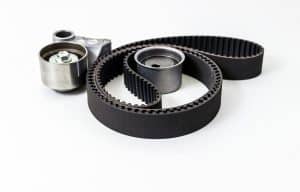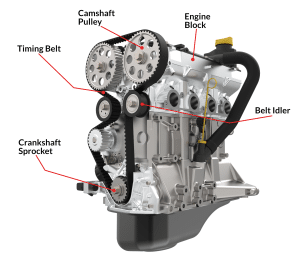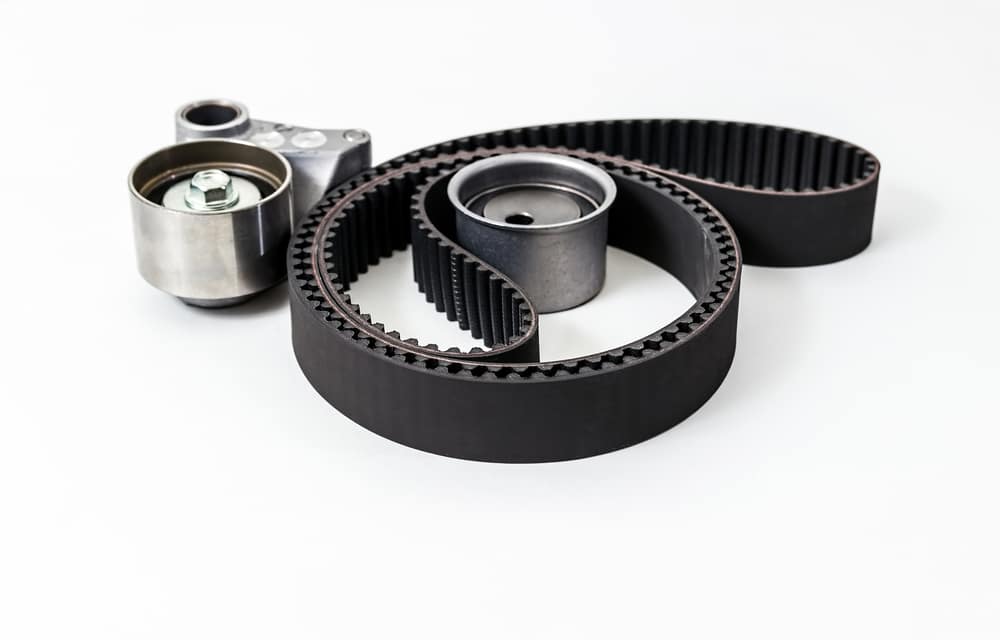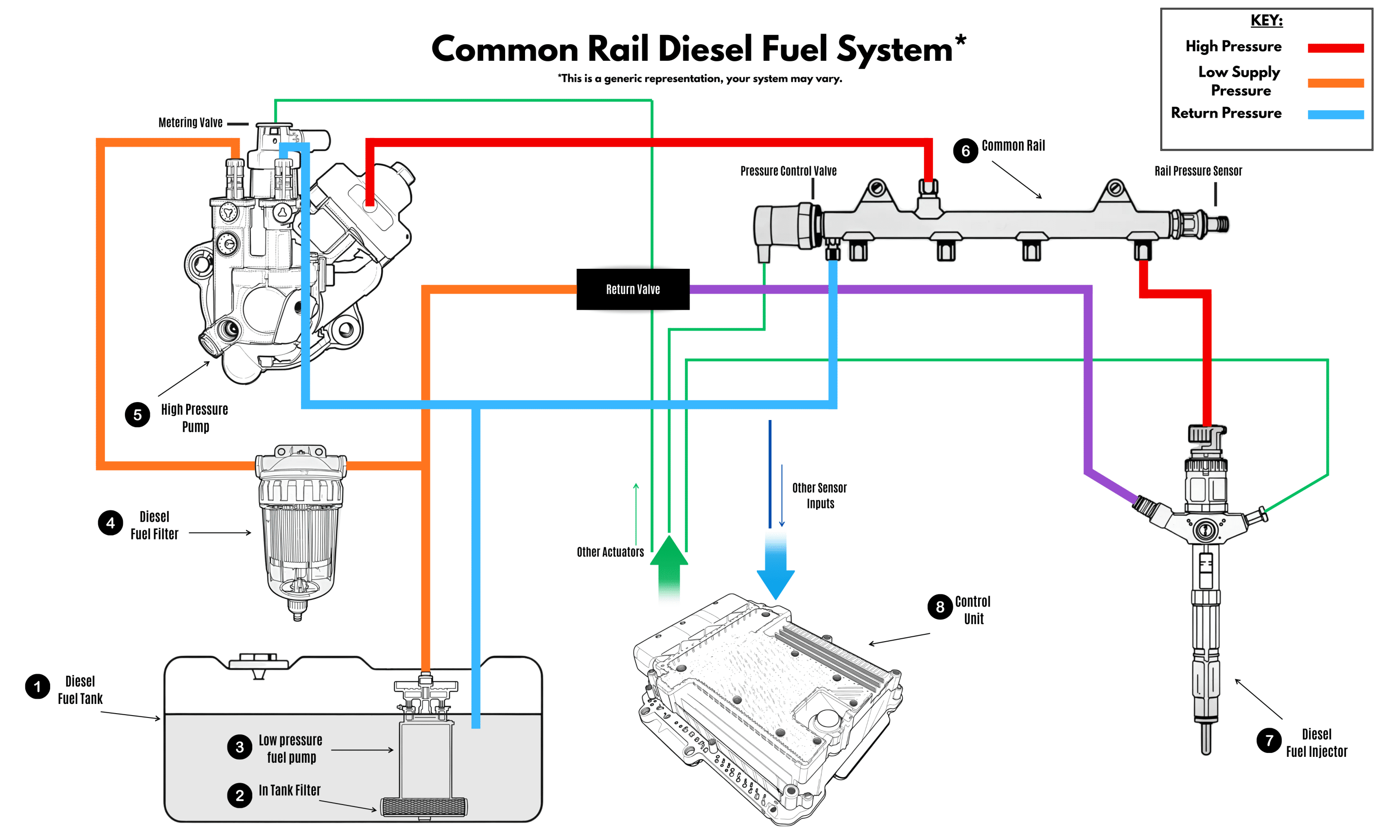Timing Belt
“It’s the last thing anyone wants to hear from their mechanic…I’m afraid you’re looking at a new engine.“
These devastating words echo through garages across Croydon when drivers discover, too late, that a small rubber component they barely knew existed has completely destroyed their engine. Every week, motorists from Beckenham to Coulsdon face the harsh reality of timing belt failure.
The most frustrating aspect? This costly disaster can be entirely prevented with simple, scheduled maintenance.
That unassuming rubber belt working tirelessly in your engine is the crucial difference between a reliable vehicle and a repair bill that potentially exceeds its value. What’s truly alarming is how this vital component typically gives absolutely no warning before catastrophic failure occurs.
In this essential guide, our experienced technicians at Smith’s of London reveal why we consider the cambelt the “silent engine killer” and why this frequently overlooked maintenance item demands your immediate attention.
What Is a Cambelt (Timing Belt) and Where Is It Located?

Your engine contains numerous precisely synchronised moving parts that must work in perfect harmony. These critical components orchestrate your engine’s timing, ensuring valves open and close at exactly the right moment to allow the optimal fuel-air mixture.
Depending on your specific vehicle, it will have either a cambelt (also called a timing belt) or a timing chain. It sits at the front of your engine, concealed behind protective covers. You’ll never notice it during casual inspections under the bonnet, but despite being hidden from view, this part is absolutely essential for your vehicle’s operation.
Cambelt vs. Timing Chain: How They Compare
Whilst cambelts and timing chains both manage an engine’s timing, they have distinct characteristics worth understanding:
Cambelt (Timing Belt): These rubber-based belts incorporate fibreglass or Kevlar reinforcement for durability. They require scheduled replacement, operate with minimal noise, and are generally less costly to manufacture. Many car makers select them for their quieter performance and reduced production expenses.
Timing Chain: Constructed from metal (similar to a bicycle chain), timing chains typically endure longer but aren’t indestructible. They remain vulnerable to failure, especially if regular oil changes are overlooked. While generally more robust, they still require proper maintenance.
Uncertain which your car has? Check your owner’s handbook or ring us at Smith’s of London on 020 8674 3377 for expert guidance!
Why Your Cambelt is Key to Engine Timing and Efficiency
Your engine functions by combining fuel and air, igniting this mixture, and generating power. The timing belt coordinates the crankshaft and camshaft(s), ensuring pistons and valves move in perfect synchronisation. This precise timing ensures valves open at exactly the right moment to permit the fuel-air mixture (or just air in direct injection engines) into the combustion chamber and then close before ignition occurs.

When timing is synchronised, the valves open, allowing air and fuel to enter the cylinder. The piston rises, compressing the mixture, which ignites at the optimal moment. The resulting reaction drives the piston downward, and exhaust gases exit at precisely the right time. It’s comparable to a symphony orchestra where each musician must play their part exactly on cue, creating a harmonious performance.
If timing becomes even slightly misaligned, your engine’s performance deteriorates dramatically. As cambelts age, they inevitably stretch, wear or fray. Even minor deviations in timing can trigger significant issues throughout your engine.
What to Expect If Your Cambelt or Timing Chain Fails
When a timing belt or chain malfunctions, the precise coordination between pistons and valves instantly collapses. This is particularly catastrophic in interference engines (which most modern vehicles have). In these designs, pistons and valves share the same space at different times; when properly timed, they never meet. However, when timing fails, extensive damage becomes virtually inevitable.
Issues Your Engine Will Experience:
- Valve System Damage – The collision transmits force throughout the valve system, breaking rocker arms, lifters, pushrods, and potentially the camshaft itself.
- Valves and Pistons Crash – When the belt fails, the crankshaft (which drives the pistons) continues rotating while the camshaft (which controls the valves) loses synchronicity. This causes pistons to violently impact open valves. This typically bends or breaks valves, while damaging pistons and the cylinder head.
- Engine Block Damage – In severe cases, the massive forces can crack the cylinder head, while broken valve fragments may score or damage cylinder walls beyond repair.
The cost of repair can exceed your vehicle’s value, potentially reaching several thousand pounds, or you may need a new engine altogether.

How Delaying Timing Belt Replacement Can Lead to Disaster
Postponing a timing belt replacement essentially gambles with your engine’s survival. Unlike many vehicle components that gradually deteriorate and provide warning signs, timing belts typically fail suddenly with zero advance notice. Delaying this critical maintenance might save you a few hundred pounds now but could ultimately cost you thousands in extensive engine repairs.
How to Know When It’s Time to Replace Your Cambelt
Cambelt replacement intervals vary significantly between different manufacturers and models. There’s simply no universal guideline that applies to every vehicle. Rather than relying on general timeframes, always consult your specific vehicle’s service manual or call us at Smith’s of London on 020 8674 3377. Our experienced technicians have access to comprehensive manufacturer technical information to advise you properly.
Replacing your timing belt when recommended isn’t merely suggested maintenance; it’s crucial protection against one of the most devastating failures your vehicle can experience.
The Complex Task of Replacing a Cambelt
Replacing a cambelt is comparable to performing open heart surgery on your vehicle. This vital component is nestled deep within your engine bay, behind numerous other parts, making access extremely challenging.
This complex procedure often requires specialised tools and comprehensive technical knowledge that many garages simply lack. The difficulty level increases substantially for certain vehicles, particularly those with cramped engine compartments or complex designs.
When replacing the timing belt at Smith’s of London, we’ll also assess if components like tensioners, pulleys and water pumps require simultaneous replacement. These parts wear at similar rates, and replacing everything together protects you from expensive engine damage and additional labour costs if they subsequently fail. It also ensures your vehicle won’t break down unexpectedly due to one of these associated parts failing after the belt has been replaced.
If this job isn’t executed precisely, it can cause extensive damage to your engine. That’s why it’s crucial to entrust it to a team with the expertise and correct tools for your specific vehicle. At Smith’s of London, our highly qualified technicians have extensive experience replacing cambelts and timing chains, ensuring your engine continues running smoothly and reliably.
Timing Belt Warning Signs You Shouldn’t Ignore
Important Note: A timing belt often fails suddenly without any warning signs. Regular maintenance is your best protection against catastrophic engine damage.
Most cambelt failures occur abruptly, without any advance indicators. Early warning signs are therefore rare, but if they do appear, they might include:
- Unusual engine noises – Be attentive to ticking, clicking, or sharp squealing sounds, particularly during startup. Though realistically, you’re unlikely to notice them before failure occurs.
- ‘Check engine’ light – When your engine’s sensors detect timing irregularities, they’ll trigger this warning indicator. While it could signal numerous issues, timing belt wear is certainly one possibility.
The challenge is, that these symptoms can mimic other vehicle problems, making timing issues notoriously difficult to diagnose accurately. If you’re experiencing these warning signs, don’t risk a catastrophic failure; ring our Croydon garage today for an expert assessment.
At Smith’s of London, we work proactively to prevent problems before they occur. That’s why during your annual service, we carefully review your vehicle’s service history to determine when your timing belt was last replaced and what your manufacturer recommends regarding replacement intervals. Our experienced team will provide clear, honest advice about your timing belt maintenance, enabling you to make an informed decision about replacement before problems develop.
The Dangers of Ignoring Your Cambelt Until It Fails
A worn or failing timing belt can leave you stranded, inflicting extensive (expensive) damage to your engine. If you compare the cost of a routine timing belt replacement with that of repairs caused by failure, there is a huge difference!
It’s not solely about cost, however. A failed cambelt often means your vehicle stops without warning, potentially in hazardous circumstances such as fast-moving traffic, on a motorway, or in an awkward location that endangers you, your passengers and other road users.
If you’re uncertain when your cambelt was last changed, don’t delay until it’s too late. Ring Smith’s of London on 020 8674 3377. We’ll examine your service history and advise if it’s time to schedule a replacement.
Separating Fact from Fiction: Cambelt Myths
In our years serving Croydon, Beckenham and Coulsdon motorists, our specialists at Smith’s of London have encountered numerous justifications for postponed maintenance. Here are several common misconceptions we frequently hear:
“If my car is running fine, the belt is fine.”
This is dangerously incorrect! A timing belt often performs perfectly right until the moment it catastrophically fails. Your vehicle can run smoothly one minute and suffer devastating engine damage the next. This silent threat typically gives no symptoms until it’s too late. This explains why timing belts must be changed based on the time and mileage intervals stipulated by your vehicle manufacturer.
“A timing belt is just a small rubber belt – it doesn’t matter much.”
Absolutely false! Your timing belt is the silent killer of engines. It may appear to be just a toothed rubber strip, but it’s actually one of the most critical components in your vehicle. When it fails, it can cause massive damage within seconds. The timing belt maintains your engine’s valves and pistons moving in perfect synchronisation; when it fails, these parts collide violently, often causing irreparable damage to sections of your engine. What might have been an affordable maintenance procedure can transform into an extremely expensive engine rebuild or replacement!
“I don’t drive my car that often, so the timing belt will last longer.”
This myth disregards how rubber naturally ages. Even when your vehicle remains idle, the timing belt rubber will progressively degrade; this explains why manufacturers specify both mileage and age intervals. Ignoring the time interval significantly increases the risk of unexpected failure, potentially causing significant engine damage. Always follow the manufacturer’s recommended replacement schedule, regardless of how infrequently you drive.
“Any garage can do a timing belt job properly.”
This dangerous assumption leads many drivers to select purely based on price. Timing belt replacement is a highly specialised procedure requiring precise alignment of engine components down to the smallest degree. It demands specific knowledge, manufacturer-appropriate tools, and meticulous attention to detail. Some garages choose not to perform this type of work due to its complexity. At Smith’s of London, we possess the expertise, technical information, specialist tools and proven track record to ensure your timing belt is replaced correctly, protecting your engine and providing peace of mind for many miles ahead.
One Last Tip: Check It Before It’s Too Late!
Like many critical aspects of vehicle maintenance, caring for your timing belt requires proactive rather than reactive action. Most motorists only learn about this crucial component after it has failed and extensive damage has already occurred.
At Smith’s of London, we firmly believe prevention surpasses repair. Our approach has earned us:
- A {{average-rating}} star Google rating from {{review-count}} satisfied customers
- Our comprehensive 12-month parts and labour guarantee
- Specialist tools and highly skilled technicians for precise cambelt work
- Recognition for outstanding value and transparent pricing
- A reputation as Croydon’s trusted cambelt specialists
Don’t leave your engine’s well-being to chance. Ring us on 020 8674 3377 with any questions about your vehicle. Our friendly experts at Smith’s of London are here to help keep you safely on the road for years to come.



